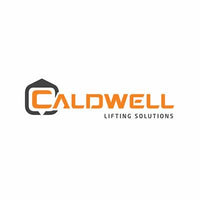DURA-LITE™ PRODUCT FEATURES:
- Lightweight
- Non-Conductive
- Corrosion Resistant
- Complies with ASME B30.20, design category B, service class 4.
- Proof tested with certificate issued.
- DURA-LITETM product is compliant with European Community standards CE.
DURA-LITE™ Beams have been…
- Chemical tested.
- Temperature tested.
- Cycle tested.
- Proof tested with a certificate issued.
COMPOSITE BEAM ADVANTAGES
Caldwell Dura-Lite™ equipment offers many advantages to a wide variety of applications and industries
- Composite material is not detected by radar, ideal for military applications.
- Lightweight composite beams do not reduce crane capacity as much as the steel equivalent.
- Beams 8' and under can be shipped via small package service saving time and money.
- Non-conductive materials are ideal for use in the utility industry.
- Marine applications and other harsh environments are no match for the non-corrosive properties of our composite beams.
- Dura-Lite™ beams are the lightweight, ergonomic solution needed to help reduce work related injuries.
- Service class 4 means that these lifters are designed for 2 million load cycles - that's over 30 years at 200 lifts per day
1. What is the difference between a spreader beam and a lifting beam? Lifting beams are typically designed for a bending moment versus the spreader beam that incorporates top rigging and is designed for a compressive load.
2. What are composite spreader beams made of? Caldwell Dura-Lite Composite Spreader Beams are made from materials that are bonded together to form ultra-strong lifters.
3. What gives spreader beams such stability? The stability of a spreader beam versus a lifting beam is a result of taller headroom (due to top rigging) and a lower center of gravity from the crane hook attachment to the point of the assembly (lifter and load), whereas a lifting beam has a single lifting point.
4. In what capacities is the beam available? Standard capacities range from 1/4 ton to 3 tons.
5. Does the beam meet any ASME standards? They are engineered to withstand the demands of rugged environments and comply with ASME B30.20 design category B, service class 4.
6. How long will my beam last? Service class 4 means that these lifters are designed for two million load cycles—that's over 30 years at 200 lifts per day.
7. Is the beam supplied with a proof test certificate? Yes. Every beam is proof tested—and issued with a certificate.
8. Is the beam suitable for military applications? Yes, because composite material is not detected by radar.
9. Is the beam suitable for use in my marine application? Marine applications and other harsh environments are no match for the non-corrosive properties of our composite beams.
10. Where else might you find this composite spreader beam? Non-conductive materials are ideal for use in the utility industry—and many others.
11. How will my beam be shipped? Beams 8-ft. and under can be shipped via small package service—saving time and money.


